Social Media Marketing for Doctors and Medical Practices
Social media has become one of the most powerful communication tools in modern society. The dominance of social media is undeniable; statistics show that users spend an average of 2.5 hours every day scrolling through platforms like Facebook, Instagram, TikTok, LinkedIn, and YouTube, and this number continues to climb.
For healthcare providers, the vast world of social media provides an opportunity to engage in meaningful conversations and build lasting relationships with both current and prospective patients. People from all walks of life turn to social media as part of their decision-making process when choosing doctors, dentists, or surgeons. Surveys indicate that a significant percentage of patients research providers online before scheduling appointments,1 with many using social platforms to read reviews, view before-and-after photos, and get a sense of the practice’s personality. In other words, your social presence may be the first impression a potential patient has of your practice.
For doctors and medical practices, the stakes are higher than in other industries. To utilize social media both ethically and effectively, providers must present accurate information, build trust, and stand out in a highly competitive healthcare marketplace. This means showing up consistently, offering educational resources that empower patients, and communicating with professionalism and authenticity. By doing so, practices can humanize their brand, foster loyalty, and establish themselves as credible voices in an often crowded online space.
At Rosemont Media, we understand the nuances of medical and dental digital marketing. Our team specializes in helping practices harness the potential of social media to become respected influencers within their fields. Whether it’s educating patients about cutting-edge procedures, highlighting inspiring success stories, showcasing compelling before-and-after photos, or driving traffic back to your website, we create strategies that are designed to resonate with your audience.
With our expertise, we can guide your practice to:
By partnering with Rosemont Media, you can transform social media into a tool that not only supports your practice’s growth but also strengthens your reputation as a trusted healthcare provider.
Why Social Media Marketing Is Essential for Healthcare Practices
Most people use social media to some degree, with many spending hours on sites like Facebook and Instagram every day. In fact, it’s estimated that users spend an average of two and a half hours daily perusing their social media feeds, and the number of those using these sites continues to grow.2 This creates a significant opportunity for you to connect with prospective patients by meeting them where they already are.
Keep in mind, if you’re not monitoring the behaviors of your target audience, someone else is. Another practice is already responding to and influencing your prospective patients through their social media accounts. This is why it’s important for your practice to not only establish its own pages, but also tailor your activity according to those you want to reach.
There’s no better time than the present to increase your social media involvement, and by using the right marketing strategy, you can strengthen your practice in many ways. From building trust through consistent messaging to creating more awareness through customized posts and ads, social media marketing could be the missing piece that takes your online presence to the next level.

Platform-by-Platform Strategy Guide
Every social media platform has its own strengths, audience demographics, and content formats. For healthcare practices, it’s important to understand that what works well on Instagram may not resonate the same way on Facebook or LinkedIn. By tailoring your strategy to the unique features of each platform, you can maximize engagement, build credibility, and reach the right patients where they are most active.
-
Facebook
Facebook remains one of the most reliable and widely used platforms for medical and dental practices, offering tools that connect with both mature and wide-ranging demographics. The site’s massive user base makes it a powerful channel for patient outreach.
What performs best:- Longer-form posts featuring procedure details, practice announcements, and community involvement.
- Promotional content, such as event invites, special offers, or links to blog posts.
- Rich media including videos and graphics, along with Facebook’s built-in features like event pages, offers, and reviews.
Use Facebook to:- Share practice news or updates (new procedures, staff highlights).
- Promote events or seasonal campaigns.
- Post patient reviews or success stories, enhancing reputation and trust.
Analytic tools on Facebook provide performance tracking and help refine your strategy over time. And with its strong targeting capabilities, you can tailor ads to specific geographic areas, age groups, and interest profiles, ensuring your content reaches the most relevant prospective patients.
-
Instagram
Instagram is a visually-centric platform perfectly suited for showcasing your practice’s personality through imagery and short-form video. For both dentists and plastic surgeons, this is a powerful medium to highlight before-and-after galleries, patient testimonials, team spotlights, and office tours.
Features to leverage:- Reels and Stories drive engagement through dynamic, ephemeral content.
- Visual consistency: A branded aesthetic, developed through a social media brand guide, helps strengthen recognition and recall.
- Instagram Lead Ads: Especially valuable in dental marketing, these ads allow patients to submit booking information directly within the app, reducing friction in the appointment process.
- Google visibility: As of 2025, you can optimize your Instagram content for Google by using patient-focused keywords in captions and adding specialty or location terms to your bio, boosting discoverability both in-app and in search engines.
Best practices:- Use high-quality before-and-after visuals to demonstrate results, with proper patient consent.
- Keep content authentic and personal: showcase your team, procedures, and culture.
- Include succinct yet descriptive captions with relevant keywords (e.g., procedure names) to improve discoverability.
- Add alt text descriptions to images, improving accessibility and giving Google more context for your content.
- Stay consistent with hashtags and geo-tags to expand local reach and attract nearby patients searching for services.
By combining visual creativity with smart optimization, Instagram allows your practice to strengthen its brand presence, connect with patients authentically, and even improve visibility on Google searches.
-
TikTok
TikTok continues to grow as a key platform for reaching younger and increasingly broader audiences, including millennials and Gen Z. Both plastic surgeons and dental practices can benefit from TikTok’s short-form, trend-driven format.
Why it works:- Trends and challenges provide a ready framework for creative engagement.
- Authenticity is rewarded; showing the human side of your practice makes content more relatable.
- Educational “how-to” clips (e.g., flossing tips, procedure insights) perform well and position your practice as helpful and knowledgeable.
Tips for success:- Use trending audio to increase visibility via TikTok’s algorithm.
- Balance fun, light-hearted content with educational value and privacy protections.
- Stay consistent and responsive; engage with comments and participate in community trends.
If your goal includes attracting younger patients or humanizing your practice, TikTok marketing for dentists and plastic surgeons offers a valuable opportunity to create shareable, creative content that resonates.
-
LinkedIn
LinkedIn is an often-overlooked platform for healthcare providers, but it holds significant value, especially for professional visibility, referral networking, and thought leadership.
Strengths include:- Sharing educational articles, procedure updates, and blog posts to position your practice as a credible authority.
- Connecting with other healthcare professionals and potential referral sources through professional networking.
- Leveraging LinkedIn ads to target specific industries or job roles (useful for B2B initiatives or outreach to corporate health programs).
Content ideas:- Industry insights (e.g., new technologies or emerging trends).
- Practice achievements or team milestones.
- Thought leadership pieces addressing specialty-specific topics.
For practices focused on building professional reputation, referral partnerships, or institutional credibility, LinkedIn serves as a refined platform to reach colleagues, partners, and decision-makers in healthcare.
-
YouTube
YouTube is the top platform for long-form video content, providing deep educational value and credibility through storytelling.
Best uses:- Procedure explainers, FAQs, and detailed educational pieces that help patients understand complex treatments.
- Patient testimonials and before-and-after result showcases (with patient consent) that build trust and relatability.
- Behind-the-scenes practice tours, staff introductions, and procedural overviews, which add transparency and familiarity.
Benefits:- Videos can drive significant traffic back to your website when optimized with relevant titles, descriptions, and tags.
- Search-optimized content tends to stay relevant longer and offers better long-term return compared to ephemeral platforms.
- YouTube’s embedded content is shareable across your website, social media channels, and email campaigns.
By using YouTube strategically, your practice can cement itself as a trusted educator, gain visibility through search, and deepen engagement beyond bite-sized social media content.
Bringing It All Together
While each platform offers unique opportunities, the most effective social media strategy involves using them in combination. Facebook may help maintain patient relationships, Instagram can showcase your practice visually, TikTok can expand your reach with younger audiences, LinkedIn can strengthen professional credibility, and YouTube can provide in-depth education that stands the test of time. When coordinated under one cohesive plan, these platforms reinforce one another and create a powerful, well-rounded presence for your practice online.
At Rosemont Media, we specialize in helping doctors identify which platforms can deliver the strongest return for their specific goals. By leveraging platform strengths strategically and maintaining consistent branding across channels, we help practices stand out in a crowded digital landscape and connect with patients in meaningful ways.
Types of Content That Work for Healthcare Practices
Not all social media content carries the same impact. For healthcare providers, the most effective posts strike a balance between being educational, authentic, and visually engaging, while also reinforcing professionalism and compliance with industry regulations. Below are some of the content types that consistently resonate with patients and help build stronger connections online.
Educational Posts
Patients often turn to social media for quick, reliable answers to common health and treatment questions. Educational posts allow you to provide value while also positioning your practice as a trusted source of expertise. These can take the form of short videos explaining how a procedure works, graphics breaking down the differences between treatment options, or captions that clarify myths and facts about a particular service.
Educational content works especially well when it is concise, visually supported, and tailored to your audience’s interests. For example, a dentist might share tips for maintaining oral hygiene between visits, while a plastic surgeon could explain what to expect during recovery. When patients feel more informed, they are also more confident in moving forward with care.
Patient Stories & Testimonials
Few forms of content are more powerful than hearing directly from patients who have had positive experiences. With appropriate permissions, testimonials and patient stories can be shared through quotes, video clips, or even full-length interviews.
These narratives build trust by showing real outcomes and humanizing your practice. They also provide prospective patients with relatable experiences, making it easier for them to picture themselves undergoing treatment. Testimonials can be posted on their own, included in Reels or Stories, or integrated into before-and-after visuals for added impact.
Behind-the-Scenes & Team Highlights
Patients want to know who you are. Sharing behind-the-scenes content or introducing members of your team helps humanize your practice and make it more approachable. This type of content can include staff spotlights, birthday celebrations, training sessions, or a glimpse of what a typical day in the office looks like. By showing the faces behind the practice, you reinforce authenticity and create a sense of familiarity before a patient even walks through the door.

Best Practices for Medical Social Media Marketing
Social media offers immense potential for healthcare practices, but with that potential comes the responsibility to uphold professionalism, protect patient privacy, and maintain consistent engagement. The following best practices ensure your presence is both effective and ethically sound.
HIPAA & Patient Privacy Compliance
Maintaining patient privacy is non-negotiable. Always practice ethical marketing by ensuring posts (even non-identifying before-and-after content) adhere to professional and legal standards. Whenever patient images or stories are used, securing explicit written consent is essential; improper sharing can damage reputations and even result in compliance issues.
Upholding Tone and Professionalism
Your practice’s social media tone should strike the right balance: warm, human, conversational, and always professional. Social media isn’t the place for overly promotional or clinical-sounding content; rather, it’s an opportunity to connect with patients through authentic, lighthearted storytelling that reflects your practice’s personality. These posts build rapport without sacrificing credibility.
Posting Frequency & Consistency
In the realm of social media, consistency beats occasional bursts. Sporadic or outdated posts may make practices appear disengaged, while a regularly updated feed demonstrates reliability and relevance. Furthermore, a blended strategy that combines organic content with strategic paid campaigns helps your message stay visible and reinforces your brand identity over time.
Why These Practices Matter
A well-structured social media approach can elevate your practice’s digital presence without compromising integrity. Ensuring HIPAA compliance limits legal risks and underscores your commitment to patient trust. Maintaining a professional yet personable tone builds audience connections and brand warmth. Staying consistent with posting frequency helps retain patient interest and positions your practice as active and engaged. Together, these practices form the bedrock of a trusted, effective online presence in healthcare social media.
Amplify Your Reach with Paid Social Media Advertising
The digital landscape in today’s marketplace is more competitive than ever. While organic social media outreach can be extremely helpful, paid advertising can provide a significant boost when it comes to expanding your visibility, driving engagement, and reaching your target audience. Platforms such as Facebook, Instagram, and TikTok offer sophisticated options for targeting specific demographics and bringing your brand’s message to them. With paid social media advertising, our team can create ads that utilize imagery, video, reels, stories, and combinations of these advanced options. Customized paid social media ad campaigns can help you deliver your message directly to your target audiences to promote new treatments or products, enhance brand awareness, drive more traffic to your website, and dramatically amplify your message across multiple marketing channels. Paid social media advertising can also help you and our marketing team gain valuable insights through analytics of the overall strategy, ultimately guiding us on how we can further refine it and progressively enhance the results.
What Paid Social Advertising Can Achieve
- Brand Awareness: Use paid ads to put your message in front of potential patients who may not follow your pages yet. This is especially vital when expanding into new treatment offerings or geographic areas.
- Conversions: Target audiences who are closer to decision-making (such as those visiting your site or viewing appointment pages) with ads designed to drive appointment requests, consultation submissions, or inquiries.
- Retargeting: Re-engage visitors who have interacted with your content before (whether they’ve viewed a specific service page, watched a procedural video, or added items to cart-like booking flows) with tailored ads that guide them gently back into the scheduling funnel.
These layered objectives ensure your advertising budget works across the patient journey, from initial awareness to final conversion.

Funnel Strategies for Healthcare Practices
To maximize effectiveness, social ad campaigns should reflect the patient journey:
- Top of Funnel (Awareness) – Cast a wide net with visually appealing ads, educational short-form video (Reels or TikToks), or testimonial spotlights to build trust and recognition.
- Middle of Funnel (Consideration) – Retarget users who have engaged with your content or visited your site using educational offers or reminders to encourage further interest, like “Learn More” or “See Before/After.”
- Bottom of Funnel (Conversion) – Target potential patients with timely offers (e.g., “Book Your Consultation”), direct lead forms, or clickable appointment links to capture new inquiries.
By structuring campaigns in this funnel-driven approach, your paid strategy nurtures prospects step-by-step toward scheduling an appointment.
Budget Planning & Measuring ROI
Effective budgeting and ROI tracking for social media are essential:
- Budgeting: Market dynamics in healthcare, especially elective procedures, tend to mean higher competition for advertising space. Facebook’s increasingly pay-to-play environment requires allocating sufficient daily spend (even starting small, like $15/day per ad) to gain traction. For some practices, dedicating roughly one-third of the digital marketing budget to Facebook ads is a reasonable benchmark.
- ROI & Analytics: Instead of focusing on vanity metrics, prioritize measurable outcomes such as appointment requests, phone calls, or email leads. Use built-in tools like Facebook Ads Manager, Instagram Insights, and TikTok analytics, in tandem with Google Analytics or CRM tracking to assess how many site visits or form conversions stem from social campaigns.
- Ongoing Optimization: Monitor campaign performance regularly, adjust creative or audiences as needed, and reinvest in top-performing ads. Rosemont Media emphasizes that combining strong visual messaging with layered targeting and proper budget allocation drives long-term growth.
Why This Matters
A structured paid social media strategy not only drives visibility but brings clarity and control. With carefully defined goals for awareness, retargeting, and conversions, your campaigns support each stage of the patient decision-making process. By pairing that strategy with thoughtful budgeting and performance tracking, your practice gains both short-term results and long-term optimizations, building a sustainable marketing engine.
Learn more about paid advertising on social media for dentists and plastic surgeons, and how it can produce focused outreach and a healthy return on investment for your marketing strategy.
Analytics and Measuring Success
True marketing impact emerges when your efforts are measured and optimized. For healthcare practices, tracking performance isn’t optional; it’s essential to understand what connects with patients and drives results.
Key Metrics That Matter
- Engagement: Track likes, comments, shares, and saves; these actions indicate whether your content is resonating. Utilizing Facebook Insights can help you gauge which posts generate meaningful interaction.
- Reach & Referrals: Knowing how many people saw your post and then visited your website adds clarity on content effectiveness. Google Analytics can reveal how many users came from social, insights that we recommend for guiding future content strategy.
- Conversions & Inquiries: The ultimate goal is action: appointment bookings, form submissions, or messages. Tracking tools such as Facebook’s conversion pixel and campaign analytics help quantify how many visits turned into leads.
How Analytics Fuel Strategy Refinement
Analytics are most valuable when they inform decision-making. For instance:
- Identify top-performing content (whether educational, testimonial, or awareness posts) and prioritize those formats.
- Use reach and engagement trends to adjust posting cadence, content type, or ad targeting to better connect with your audience.
- Monitor which campaigns led to the most conversions, then shift budgets toward those channels or creatives to boost ROI.
This iterative process (track, analyze, optimize) is exactly how our team ensures social efforts don’t just reach people, but also drive tangible business outcomes.
Example Scenario
Imagine you share a series of Instagram posts educating patients about a new treatment. Post A gets high reach and engagement, while Post B generates more website clicks and inquiries. You’d begin by analyzing what resonated; was it the format, caption, or visual approach? You’d then adjust your strategy: replicate the elements of Post A on broader channels to expand visibility, and take Post B’s format to promote appointments. Over time, these insights result in refined content that educates, engages, and converts more reliably.
Case Studies & Success Stories
Don’t just take our word for it; see for yourself what our team has helped clients achieve through a comprehensive social media strategy! Our mission is to help you stand out from the noise of social media, amplifying the great qualities that make your practice unique.
-

Social Media Case Study #1
Client or Company Information
- Client/Company Name: Chrysalis Cosmetics
- Industry: Plastic Surgery
- Project Duration: June 4th, 2025-July 30th, 2025
Objectives
The objective of this campaign was to generate more website traffic and awareness for this client. We also wanted to determine whether or not a video of the surgeon speaking directly to an audience would perform better than previous stock model imagery ads.
-
Objective 1: Website Traffic
Key Performance Indicators (KPIs):
Clicks, Website Views -
Objective 2: Creative Comparison
Key Performance Indicators (KPIs):
Engagement, Video Views
Strategy
The specific subject of the ad for this month was tummy tuck surgery. We wanted to reach an audience who had interest in physical fitness and were looking to gain more confidence in their appearance. We also wanted to target parents with children, a key audience for this procedure.
Target Audience
Demographics:
- Target Audience Age: 21-50
- Target Audience Gender: Women and Men
Psychographics:
- Interests: Beauty, Aesthetics, Luxury, Health & Wellness, Physical Fitness or Luxury Goods,
- Parents: Parents (up to 12 months), Parents with Toddlers (01-02 years), Parents with Preschoolers (03-05 years), Parents with Early School-Age Children (06-08 years), Parents with Teenagers (13-17 years), or Parents with Preteens (09-12 years)
Content Strategy
- Content Themes: The theme of the content was the surgeon discussing tummy tuck surgery to inform and educate (as authentic, educational content tends to resonate with audiences specific to social media).
- Content Calendar: We ran this particular tummy tuck ad from June 4th, 2025 until July 30th, 2025, monitoring and adjusting elements of the campaign as needed.
Platform Selection
- Platforms Used: Instagram
- Rationale: In this case, we specifically chose Instagram because we often see younger audiences (and specifically parents) here more than on Facebook or similar platforms. The surgeon also has a larger audience on Instagram, and therefore has established credibility and easily reachable content on that platform.
Execution
- Content Creation: The social media team crafted custom captions for this ad. It contained information about the video creative and how to contact the client. The video was filmed by the client and sent to the RM team for editing and captions.
- Community Management: We monitored the comments, making sure to address any questions and “like” any positive feedback.
- Paid Advertising: After receiving the creative assets from the design team and having the captions reviewed by the writing team, the social media team uploaded the creative into Meta Ads Manager. Other elements included budget, tailoring audience targeting, and adjusting ad placements. We tailored the video to meet size requirements for all platform placements.
Results
The results of this campaign were overwhelmingly positive. We saw a growth in link clicks, engagement, and video views.
Key Performance Indicators (KPIs)
Objective 1 Result:Link Clicks: 1,764
Objective 2 Result:Video Views: 163,054
Page Engagement: 15,551Engagement increased by 54%
Followers increased by 100%Metrics
- Engagement Metrics: Engagement increased by 54% when compared to the previous month’s ad creative with stock model-only imagery.
- Follower Growth: Followers increased by 100% compared to previous month’s ads.
Conclusion
When compared to previous campaigns where stock models were used, this campaign saw an overall increase in engagement from target audiences and a boost in website traffic. By utilizing creative elements from the practice and having the surgeon educate audiences, this campaign was deemed successful.
-
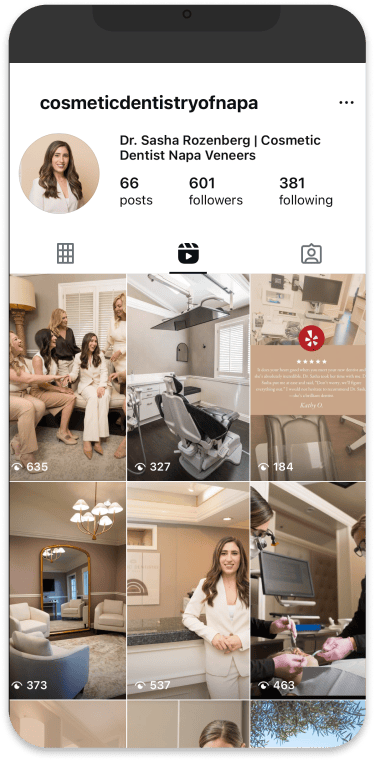
Social Media Case Study #2
Client or Company Information
- Client/Company Name: Cosmetic Dentistry of Napa
- Industry: Dentist
- Project Duration: September 2025
Objectives
We began two traffic campaigns (one across multiple platforms and one across Instagram only) for Cosmetic Dentistry of Napa in September of 2025. Our goal was to increase website traffic and brand awareness to their smile makeover procedure and patient testimonials.
-
Objective 1: Brand Awareness
Key Performance Indicators (KPIs):
Impressions and Reach -
Objective 2: Increase Site Traffic
Key Performance Indicators (KPIs):
Number of Link Clicks and Cost Per Result
Strategy
We targeted men and women in the 18-65 age groups in and around Napa, CA, aiming to reach patients who may be interested in a smile makeover. We also used detailed targeting to reach audiences who may be concerned with their physical appearance and wish to make a change to their smile.
Target Audience
Demographics:
- Target Audience Age: 18-60
- Target Audience Gender: Men and Women
- Target Audience Location: Napa, Calistoga, Oakville, Saint Helena, and Sonoma, CA
Psychographics:
- Interests: Beauty, Smile, Aesthetics, Personal Care, Health and Wellness, Listerine, Crest, Colgate, or Oral-B
Content Strategy
- Content Themes: We were able to use client-provided videos for both campaigns. The multi-platform traffic ad provided a behind-the-scenes look at the practice’s smile makeover process, while the Instagram-specific traffic ad showcased a video testimonial from a patient.
- Content Calendar: Each ad was run on a monthly basis on a schedule of 6AM-10PM daily.
Platform Selection
- Platforms Used: Instagram and Facebook
- Rationale: We wanted to have audience diversity by having an ad that ran on Facebook and Instagram, while also hitting the younger demographic by having an additional Instagram-only ad.
Execution
- Content Creation: The social media team crafted custom captions for each ad containing more information on smile makeovers. The graphics were created by the RM design team with direction from the social media team using practice-provided videos.
- Posting Schedule: The RM team decided to put the ads on a schedule from 6AM local time to 10PM local time, Monday-Sunday. This decision was made with the goal of mitigating spam and reaching target audiences.
- Paid Advertising: After the writing team finalized the captions and the design team provided the creative elements, the social media team uploaded the content into Meta Ads Manager. They then added the captions to the video, tailored the audience targeting, and set the budget and ad schedule.
Key Performance Indicators (KPIs)
Objective 1 Result: (Brand Awareness)September 2025: Ad 1 (Multi-Platform)- Impressions: 19,566
- Reach: 16,152
Ad 2 (Instagram Only)
- Impressions: 23,759
- Reach: 22,839
Objective 2 Result: (Increase Site Traffic)September 2025: Ad 1 (Multi-Platform)- Link Clicks: 916
- Cost Per Result: $0.40
Ad 2 (Instagram Only)
- Link Clicks: 404
- Cost Per Result: $0.72
Metrics
Based on the above KPIs, the practice saw an increase of brand awareness and overall traffic on their website. Even though they will be moving to only one ad (running only on Instagram), we are optimistic that we’ll see a continued increase in traffic.
Common Mistakes to Avoid in Healthcare Social Media Marketing
Even with the best intentions, healthcare practices can fall into a few predictable traps when it comes to social media marketing. Here are some of the most frequent missteps that can undermine credibility, engagement, and patient trust.
-
Posting Irregularly or Inconsistently
One of the biggest mistakes is not maintaining a steady cadence of content. Algorithms favor active profiles, and inconsistent posting can make your presence seem out of touch or deprioritized. Reliable posting creates familiarity and keeps patients engaged over time.
-
Using Poor-Quality Visuals
Blurry images, mismatched branding, or uninspired design can distract from your message and undermine the professional appearance of your practice. Visual consistency (think your logo, colors, and style) matters more than decoration; it builds brand recognition and reinforces trust.
-
Ignoring Comments and Messages
Social media is designed for conversation, but many practices fail to engage when followers reach out. Whether it’s a question, compliment, or concern, leaving comments or DMs unacknowledged can make your practice feel distant or unresponsive. Engagement reinforces care and builds rapport with your audience.
-
Not Tailoring Content to Your Audience
General posts may reach many people, but they rarely resonate deeply. It’s a mistake to assume all followers have the same needs, as patient demographics vary in age, interests, and health literacy. Tailor content accordingly (for instance, aesthetic content for younger audiences, or wellness guidance for older patients) to foster real connection and relevance.
Social Media Marketing for Different Specialties
 Effective social media strategies must reflect each healthcare specialty’s unique offerings, audience, and goals. Below, we highlight how different practices can leverage social media.
Effective social media strategies must reflect each healthcare specialty’s unique offerings, audience, and goals. Below, we highlight how different practices can leverage social media.
Plastic Surgeons
When it comes to social media for plastic surgeons, curating a compelling visual portfolio is crucial for showcasing aesthetic outcomes and reinforcing comfort and safety. Through high-quality before-and-after galleries, procedure breakdowns, and behind-the-scenes glimpses, practices can demystify treatments while emphasizing credentialing and safe patient care. A robust social media identity helps construct brand presence, fosters connection, and builds confidence, especially when paired with consistent educational messaging.
Dentists
Dental practices have rich storytelling opportunities through smile transformations and wellness education. Before-and-after visuals bring smile makeovers to life, while posts about Invisalign® and routine preventive care help patients understand treatment progression and home habits. Platforms like Facebook and Instagram are especially strong for these specialties, allowing for narrative-driven posts, infographics, and testimonials that resonate with both current and prospective patients. Our digital marketing experts support this with tailored social media strategies for dentists that include profile optimization, custom content creation, monthly post calendars, and monitoring of conversions and ad performance.
Other Elective Specialties
- Dermatologists can leverage social media to address both cosmetic and clinical concerns (e.g., skin care tips, acne treatments, and aesthetic procedures) using product recommendations, seasonal campaign posts, and myth-busting content.
- Bariatric surgeons can benefit from sharing real patient journeys, lifestyle transition tips, nutritional guidance, and motivational before-and-after milestones. This kind of authentic storytelling helps prospective patients relate and feel supported in their transformation.
- Ophthalmologists and optometrists can highlight vision care through educational content on topics like LASIK, dry eye, and digital eye strain. Posts might include infographics on eye health, patient testimonials about improved vision, or tech explanations.
Why Specialty-Focused Content Matters
Each elective specialty reaches audiences with different needs and emotional journeys. Social media content that acknowledges these nuances personally can direct patients toward their specific concerns. Whether spotlighting preventive versus aesthetic care, or providing guidance versus transformation stories, Rosemont Media shapes content that speaks directly to the patient’s mindset and trust-building path.
Integrating Social Media with Broader Digital Marketing
A truly effective digital strategy blends social media with search engine optimization (SEO), blogs, PPC (pay-per-click), and email campaigns to create a connected ecosystem that meets patients at every stage of their journey.
Creating Synergy Across Channels
Social media doesn’t stand alone. It works best when integrated with complementary channels:
- SEO & Blogs: Regular blog content is a powerful asset. Sharing blog posts through social channels not only drives website traffic but also strengthens your site’s ranking potential in search engines. Consistent, well-optimized social posts amplify the reach and impact of your content.
- PPC / Paid Search: Paid search campaigns, whether targeting Google or social platforms, can reinforce organic visibility. Social ads nurture early-stage awareness, while search ads capture demand when patients are closer to booking. Together, they form a full-funnel amplification strategy.
- Email Marketing: Email remains one of your most direct lines to patients. You can use social engagement to grow your subscriber list, then drive content back through newsletters, and even retarget email subscribers with Facebook custom audience ads.
Mapping an Omnichannel Patient Journey
A streamlined omnichannel experience might look like this:
- A visitor discovers an educational blog post via Google.
- They click, land on your site, and sign up for email updates.
- A curated social post features the blog content, prompting engagement and follow-through.
- You send a targeted email with a related infographic or service highlight.
- An appropriate PPC campaign runs concurrently, capturing ready-to-convert visitors with coupon-style offers or appointment reminders.
This coordinated strategy ensures each interaction builds on the last; warmer, more informed, and closer to committing.
Why Integration Builds Results
When your marketing channels collaborate rather than compete, the combined effect is more powerful than the sum of individual parts. Rosemont Media’s integrated approach ensures every touchpoint is consistent, trackable, and designed to move patients closer to booking at each stage.
Our Approach
-
Discovery
We get to know what makes you unique
-
Research + Planning
We create a custom calendar just for you
-
Implement
You approve posts before they go up
-
Track Results
Our experts provide advanced analysis
Why Choose Rosemont Media
Many practices realize the value of social media but underestimate the amount of work involved in creating and executing successful social media strategies. At Rosemont Media, we utilize several in-house departments to collaborate, plan, create, and execute social media collateral and tactics. Strategic planning is necessary to create a quality social product that resonates with your target audience. Considering the ever-changing landscape of social media, our specialists can customize your online presence to evolve so you stay relevant and continue to thrive.
With a specialized focus on healthcare marketing, our team understands the nuances of the industry and what prospective patients are looking for. We have dedicated our company to helping top medical and dental professionals around the world achieve online success. By managing the full scope of your online marketing efforts — from custom medical website design to media buying to social media marketing — we can create consistent messaging across your online efforts that builds trust in your brand. Having worked with budgets of virtually every size, our team can develop a social media marketing plan that helps you reach your practice’s growth goals.
In-House Expertise with a Collaborative Edge
Our fully integrated team delivers end-to-end solutions tailored specifically for healthcare. Having all capabilities under one roof allows us to respond quickly to trends, maintain message consistency, and deliver high-quality campaigns without the inefficiencies of outsourcing.
Specialization in Elective Healthcare
We work exclusively with elective healthcare practices: dentists, plastic surgeons, dermatologists, eye care specialists, bariatric physicians, and more. This industry focus means we speak your language, understand regulatory sensitivities, and know what drives patient decisions. Our clients benefit from a refined, industry-proven playbook.
One Practice Per Market for Competitive Protection
Rosemont Media honors a policy of geographical exclusivity. By partnering with only one practice per area, we help safeguard your competitive positioning so you’re not competing against a neighbor for the same audience.
Consistency Across Digital Channels
Whether you’re designing a custom website, optimizing for search, engaging on social media, or launching paid campaigns, all of our strategies are aligned under a unified vision for your brand. This integrated approach ensures your message and branding are cohesive and your patient experience is seamless.
Partnering for Growth and Trust
Since our founding in 2008, Rosemont Media has grown into a trusted partner for healthcare providers aiming for sustained growth and visibility. Our long-standing tenure, modern agency approach, and exceptional customer service ensure that as your practice evolves, our strategies do too, backed by data-driven insights, proactive support, and personalized attention.
Frequently Asked Questions About Social Media Marketing
How often should I post on social media?
Maintaining a regular posting schedule is crucial. At minimum, aim for two to three posts per week to keep your audience engaged. For more active practices, five posts weekly strikes a sweet spot for visibility and consistency without overwhelming followers. Rosemont Media’s approach includes building out monthly content calendars to maintain a steady rhythm.
What types of content usually work best?
Content that educates, inspires, or connects performs strongly, especially when paired with visuals. Ideal types include:
- Educational snippets (e.g., treatment tips, procedure explanations)
- Before-and-after stories and testimonials
- Behind-the-scenes or team highlights
- Awareness and timely campaign posts
These formats not only inform but also create emotional resonance, building trust and credibility in your specialty.
Is paid advertising worth it, or should I stick with organic posts?
Organic content builds foundation and trust, but paid ads expand reach and precision.
- Organic: Fosters genuine engagement and brand-building with current followers.
- Paid: Amplifies visibility, targets specific audiences (e.g., location, interests), and propels conversions like appointment requests.
Furthermore, our experts generally advise combining both: organic for top-of-funnel awareness and paid for driving action.
How should I respond to negative reviews or comments?
First, always reply calmly and promptly. This shows you're listening and committed to patient care. Avoid arguing publicly; instead, invite the individual to connect privately via call or visit. Thoughtful and professional responses not only address the issue, but also demonstrate to other patients that you take feedback seriously.
How can I protect patient privacy on social media?
Safeguarding patient privacy is paramount. Follow these steps every time you post:
- Obtain explicit written consent before sharing any patient stories or images.
- De-identify visuals by removing faces, tattoos, or any unique identifiers.
- Share generalized narratives if full disclosure is unnecessary.
- Maintain a professional tone even if you're sharing lighter content.
A clear checklist can help ensure adherence to HIPAA standards without sacrificing engagement.
How do I choose the best platform for my practice?
Platform choice should align with your goals and patient base:
- Facebook: Strong for local targeting and community building.
- Instagram: Ideal for visual storytelling, transformations, and reel-style content.
- TikTok: Great for educating through quick, authentic videos, especially appealing to younger demographics.
- LinkedIn: Helps build professional credibility, relationships, and referral networks.
- YouTube: Serves long-form education and higher-intent audiences.
Take Your Social Media to the Next Level
Social media is most effective when it’s part of a bigger picture. By aligning your social campaigns with website design, SEO, and digital advertising, Rosemont Media can help create a seamless strategy that strengthens your brand, expands your reach, and drives measurable growth. Ready to see how integrated marketing can elevate your practice? Contact our team today to get started!

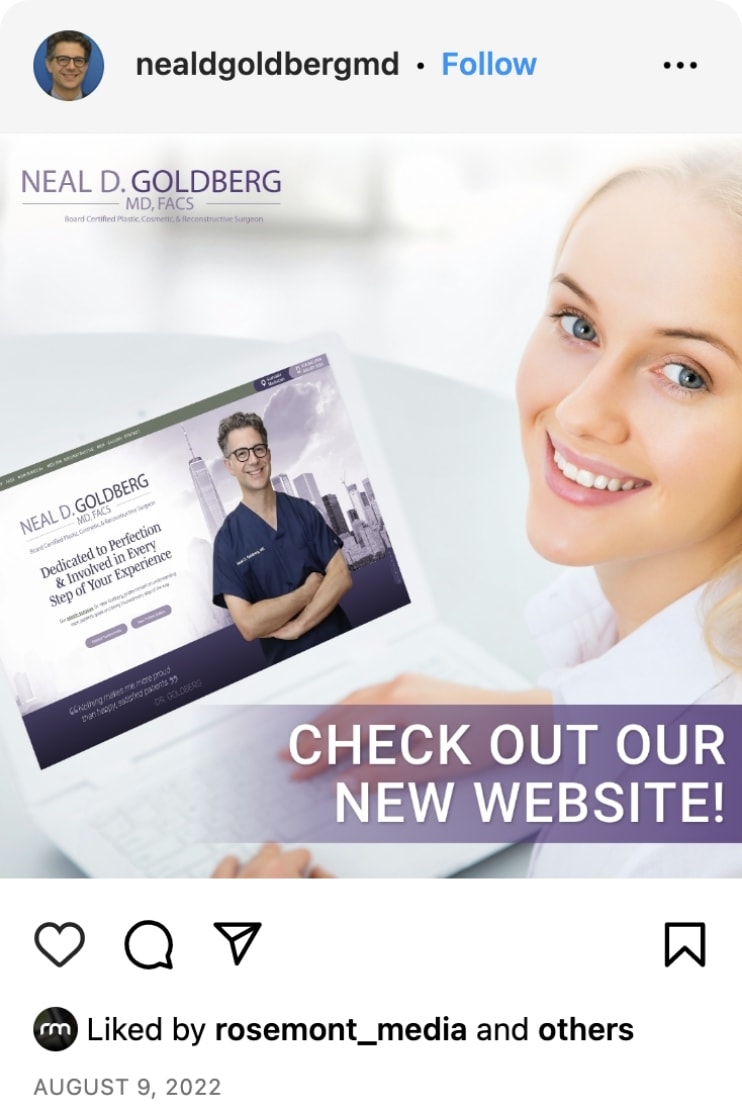
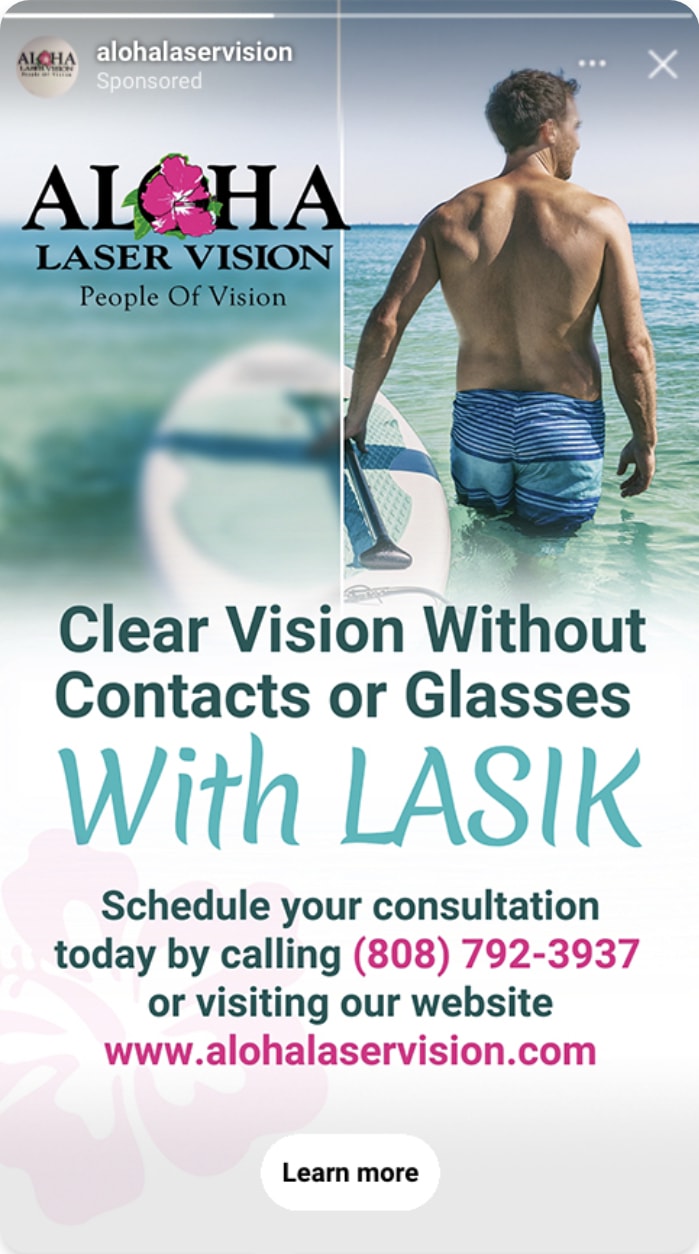

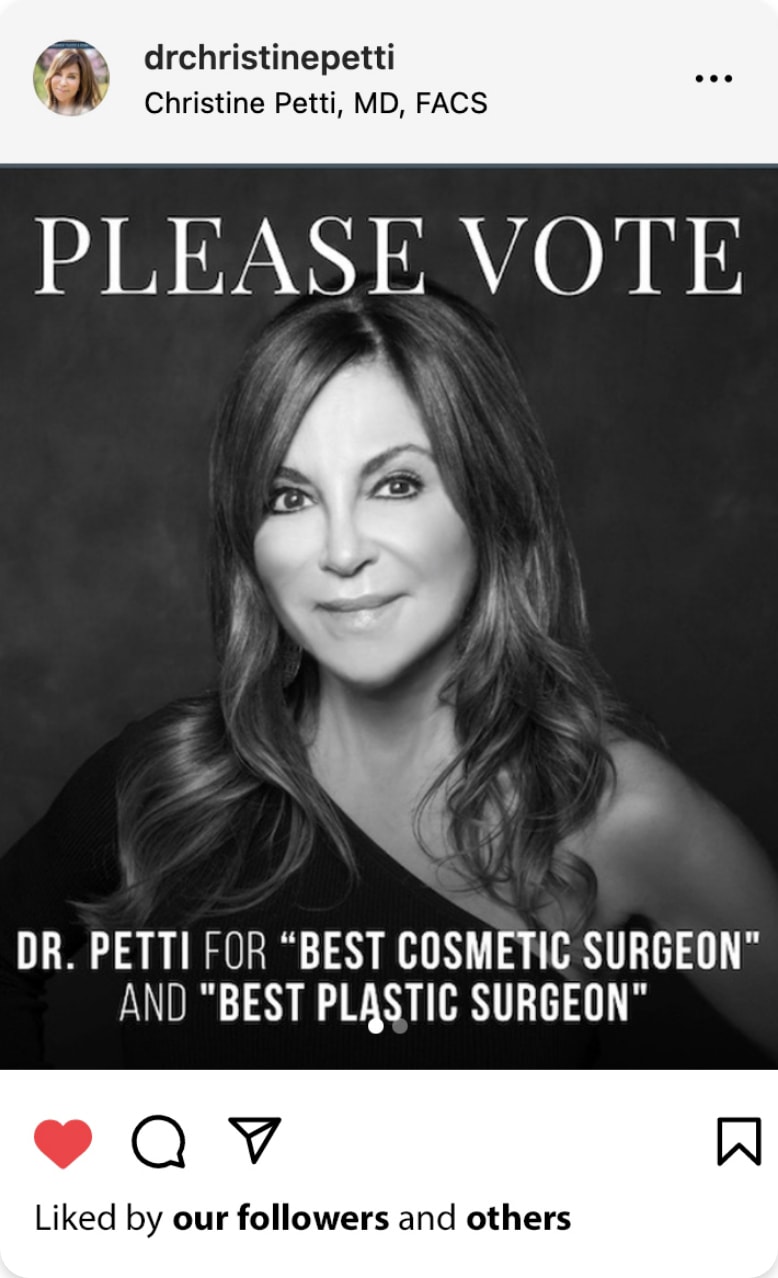
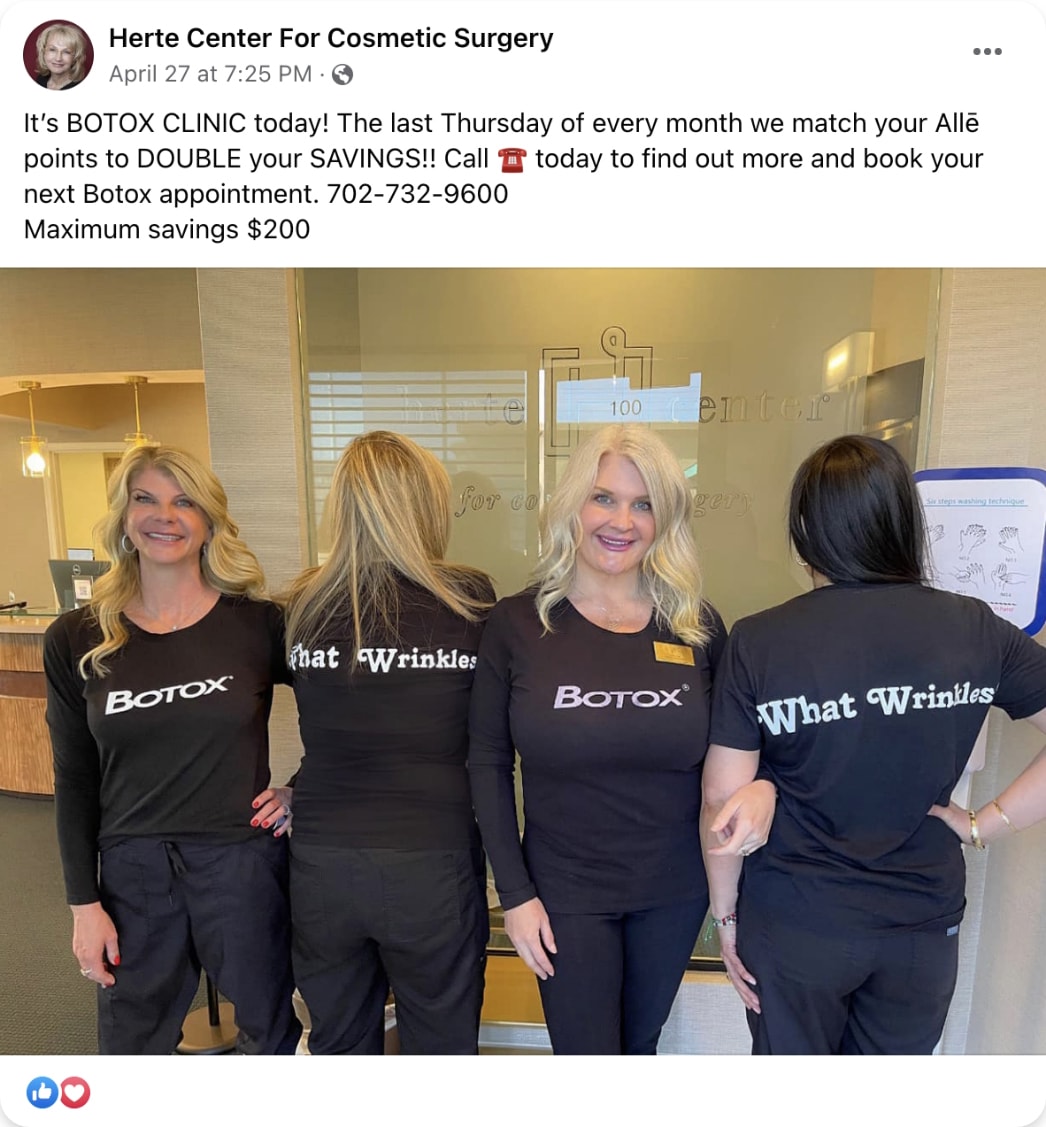

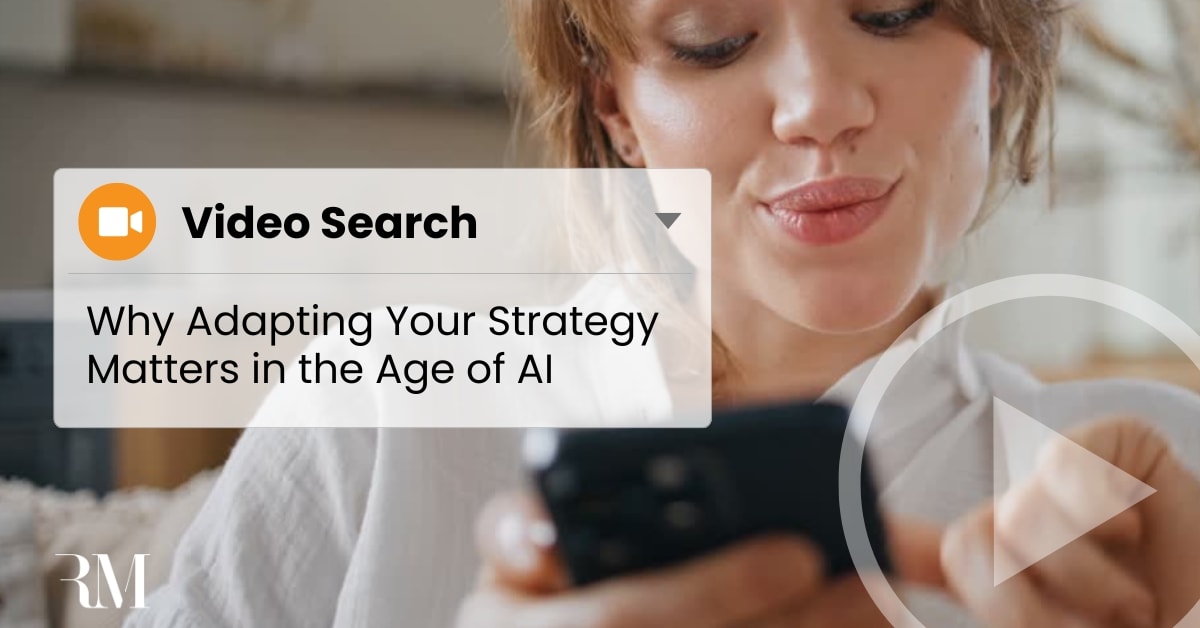

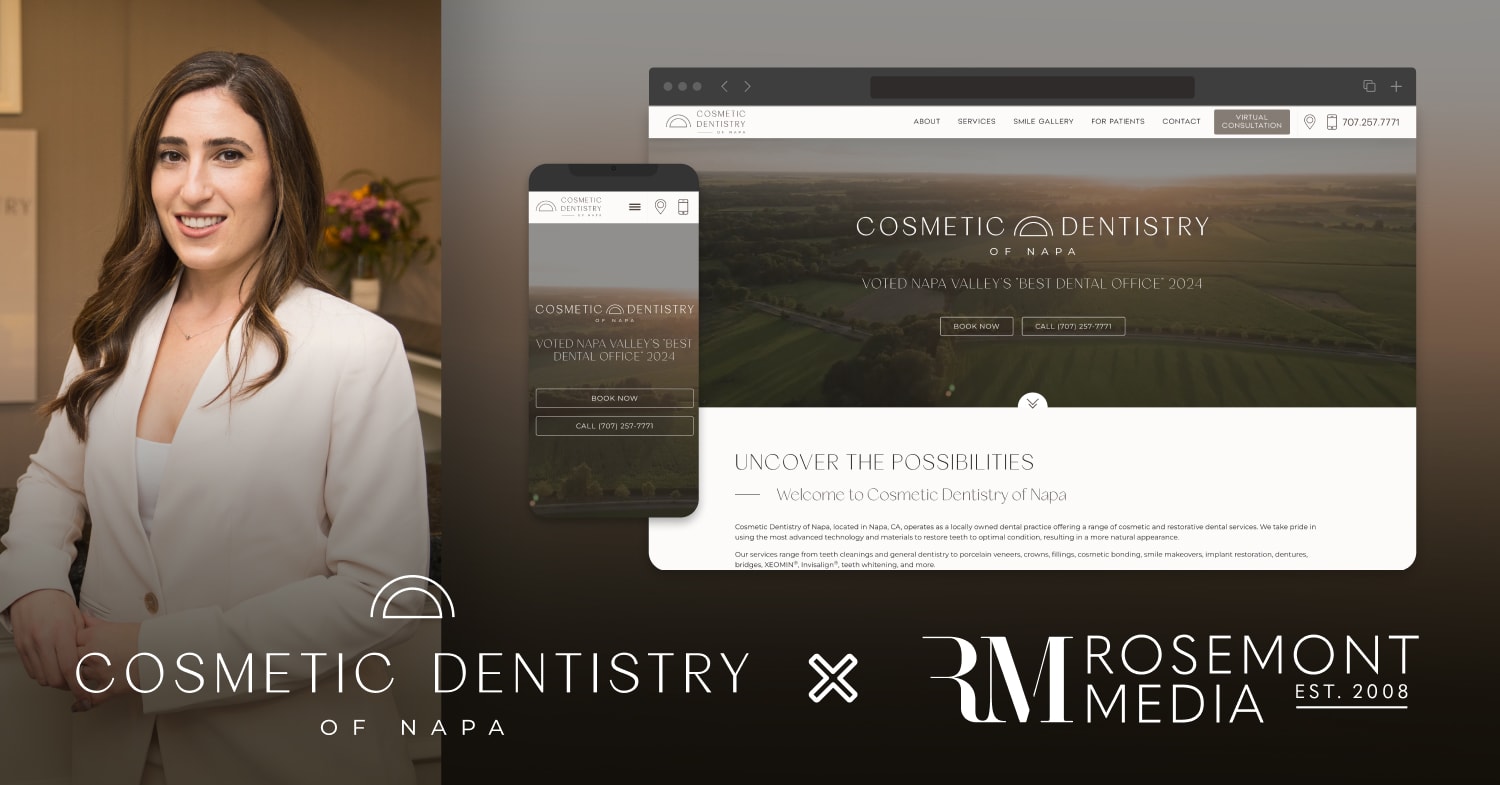
Develop Brand Awareness
Create Engagement
Showcase Your Practice Personality
Have Fun!